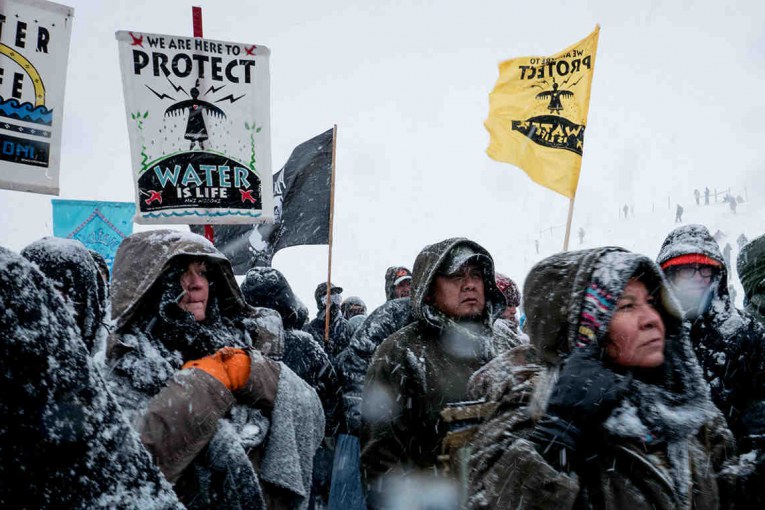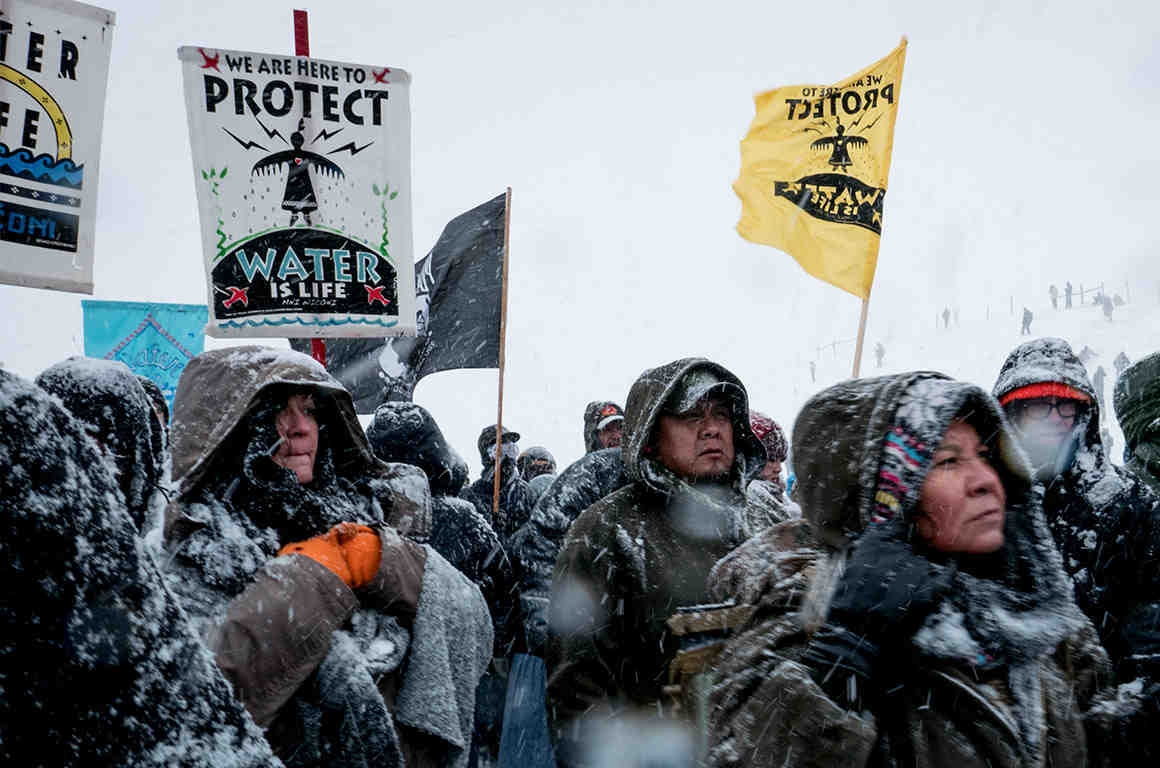

By Stephen Pevar
President Trump’s executive order Tuesday has an impressive-sounding title: “Expediting Environmental Reviews and Approvals for High-Priority Infrastructure Projects.” What the title really should say, however, is: “How to Make Money for Big Oil Real Fast Despite the Human and Environmental Costs.”
The executive order makes no reference to the Dakota Access Pipeline, the 1,100-mile pipeline being constructed to carry nearly 500 million gallons of fracked crude oil from North Dakota to Illinois each day. Yet expediting the construction of DAPL is the obvious goal of the executive order. In fact, Trump signed a presidential memorandum at the same time he signed the executive order, stating his belief that construction of the pipeline would “serve the national interest.”
Unfortunately, Trump doesn’t mention in either the executive order or the memorandum that completing the construction of DAPL will require the U.S. Army Corps of Engineers to issue a permit allowing the pipeline to be constructed underneath the Missouri River, just north of the Standing Rock Sioux Reservation in North Dakota. He doesn’t mention that the route of the pipeline was first planned to traverse land further north until white landowners complained, causing a change in the route. He doesn’t mention that a leak of oil in the Missouri River would not only threaten federally protected water rights belonging to the Standing Rock Sioux but would pollute water used by some 18 million persons. He doesn’t mention that completion of DAPL would destroy sacred sites of the tribe. And, finally, he doesn’t mention that the owner of the company building DAPL contributed more than $100,000 to his election campaign.
Trump wants to expedite “high priority infrastructure projects.” But whose “priority” is really being served here?
The Obama administration recognized that the pipeline has the capacity to cause catastrophic misery and loss if it ruptures. Consequently, the Army Corps announced that a comprehensive study must be conducted into the project’s potential environmental impact before a permit could be issued. The Obama administration also confirmed that under federal law DAPL cannot be approved until proper consultation with the Standing Rock Sioux Tribe is completed. Moreover, under international legal principles, our government should seek the informed consent of indigenous people prior to undertaking a project on federal land that threatens their health and welfare.
Yet Trump seems determined to rush the approval process.
The Standing Rock Sioux Tribe strenuously argues that construction of the pipeline would violate its rights under federal treaties and statutes. Those are issues that may ultimately need to be litigated. At this point, however, Trump apparently agrees that the law requires the Army Corps to complete the environmental impact assessment and determine the threat to the environment before going ahead with the pipeline. The Trump administration should therefore allow the Army Corps to take the time it needs to conduct a careful and proper assessment of environmental impact, both to the general public and to the tribe.
Two interrelated questions which should be answered are: What risks are we willing to take to help big oil move fracked oil from North Dakota to Illinois, and was the choice of this route influenced by the fact that a leak would immediately impact an Indian tribe rather than white landowners?
Stephen Pevar is Senior Staff Attorney, ACLU. Stephen L. Pevar’s book, The Rights of Indians and Tribes (Oxford 2012), is available here.
Obama let the project get near completion knowing all along the path it would be taking just to cave to pressure in the end and in typical fashion Obama punted the ball down the road to Trump.
It is fortunate that we finally have an insightful leader who has the fortitude of thought to properly handle these tricky situations with finesse.
Thanks Darrell, welcome aboard the Trump Train. 😉
It is fortunate that we finally have a leader who will make the hard decisions himself and not pawn it off on others.
Does that mean you are onboard?
I’m onboard with the pipeline decisions. I’m onboard with our nation becoming energy independent.
The pipeline won’t make a dent in energy independence and it moves us in the wrong direction toward getting away from fossil fuel energy. I find it ironic the talk about energy independence when the best way to do that is to move away from gas driven cars.
Every little dent helps, it all adds up.
That’s a silly point. Every little bit may make a difference in terms of an individual company’s profit, but it’s not making any difference in terms of the idea of energy independence which can be achieved far better through eliminating our use of oil-based vehicles.
You’re also making a false assumption that pipeline capacity leads to more production. By all accounts, that’s simply untrue.
Not silly at all. If we never let any project go forward because it only supplied a small percentage of our energy needs we would’ve never gotten close to demand. It all adds up. That would be like saying we shouldn’t create new reservoirs because each one only supplies a small percentage of the water needed during a drought. Now that’s silly.
Again, you’re basing your point on a contested assumption that pipeline capacity leads to more production.
Funny DG, when I’ve made the point that the pipeline will allow for the current production to be moved by pipeline rather than by train (about 8 train/day carrying capacity = DAPL pipeline capacity), I’ve been told by environmentalists that the pipeline would allow for increased production and that’s one reason the pipeline is “bad”.
depends… some ‘pipelines of concern’ have “double containment” in sensitive areas, with sensors monitoring the structural integrity of each… suspect this pipeline has some form of double-containment… if they are crossing a river/stream, the normal construction method is bore and jack, which usually uses a “casing pipe” which is bored and jacked, then the “carrier pipe” inserted within… I’d be shocked if it was ‘open cut’, or if the ‘carrier pipe’ was the the pipe jacked…
The EIR should scope that… more likely a EIS, as it is likely to be a NEPA process, rather and the equivalent of a CEQA process…
For clarification, the article cites the term “environmental impact assessment”… note all lower case… that is correctly applied to an EIS (NEPA) AND an EIR (CEQA)…
I did some legwork and the analysis seems to be that while the pipeline could allow for increased production, it’s not the only factor and given the market and costs of additional oil pumping facilities, it is unlikely to occur. I’m not an expert on this by any means.
(Note: Login seems to be working again.)